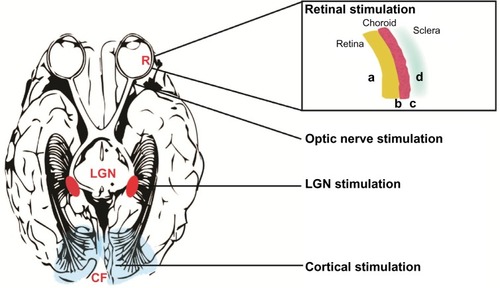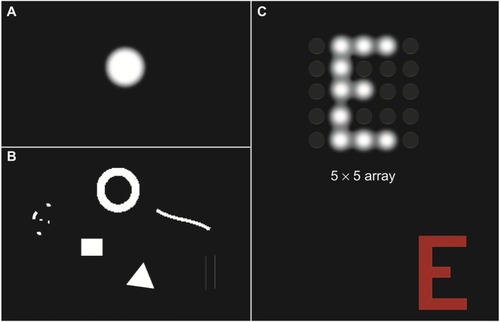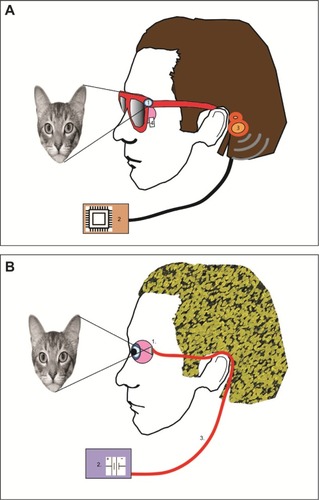Figures & data
Figure 1 Currently active vision prosthesis research groups, as of January 2016.

Figure 2 Locations of vision prostheses.
Abbreviations: CF, calcarine fissure; LGN, lateral geniculate nucleus; R, retina.

Figure 3 Examples of the simulated phosphenes (single and patterned) and their characteristics as reported by patients.

Figure 4 Schematic of a classical prosthesis with a retinal implant (A) and optical sensor prosthesis (B).

Table 1 Summary of the vision prosthesis clinical trials completed to date
